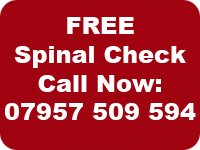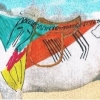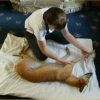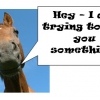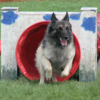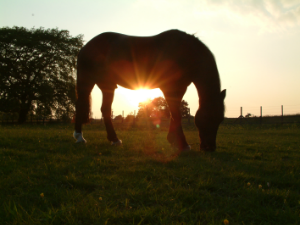 How often do we as horse owners find that one minute our horses seem fine, but the next they are ‘not quite right’. It is difficult to say when it happened, but over a few weeks or months you may notice small things such as your horse not working evenly, cantering disunited, difficulty with head carriage or bend. He may buck, rear, refuse or rush fences, bite, kick or show a change in gait and movement. If you have a competition horse their performance may be reduced. If any of this sounds familiar, it maybe that McTimoney Chiropractic is worth considering.
How often do we as horse owners find that one minute our horses seem fine, but the next they are ‘not quite right’. It is difficult to say when it happened, but over a few weeks or months you may notice small things such as your horse not working evenly, cantering disunited, difficulty with head carriage or bend. He may buck, rear, refuse or rush fences, bite, kick or show a change in gait and movement. If you have a competition horse their performance may be reduced. If any of this sounds familiar, it maybe that McTimoney Chiropractic is worth considering.
Like people, horses suffer from musculo-skeletal problems affecting not only the back, but the neck, pelvis and limbs as well. Very often the horse’s only way of communicating these problems to us is to display a change in personality, character or performance as indicated in the examples above.
McTimoney Chiropractic is a non invasive gentle form of treatment where the practitioners use their hands to perform a fast and precise ‘adjustment’ to any misaligned bones releasing them and in addition reducing pain and inflammation and increasing range of movement. It concentrates on the whole body to eliminate the cause of problems not just the symptoms. Used in conjunction with massage and soft tissue techniques gives a greater insight to the problem and a treatment that goes deeper and lasts longer.
Misalignments cause the horse to subtly change his gait to compensate for the problem. The joints involved can become stiff and lack their normal range of motion. Ligaments and tendons will be put under extra strain, muscles will have reduced elasticity and be more prone to injury. In addition nerves can become impinged causing muscle wasting (atrophy), weakness and in severe cases, paralysis. Swelling and inflammation may be evident. All this will have a knock on effect throughout the body leading to further misalignments and secondary areas of compensation and soreness.
The causes of misalignments in horses are numerous and include:
- Trauma such as accidents, falls, road traffic accidents.
- Repetitive activities that build up to cause a series of micro-traumas over a period of time i.e. mounting from the ground from the left each time you ride. Tying a haynet in the corner so the horse has to pull in one direction each time he takes a mouthful.
- Competitions – each individual discipline has varying stressors i.e. side saddle – riders weight on one side so horse has to compensate to accommodate for this. Race horses racing in one direction building up muscle on one side.
- Conformation plays a large part in the way the horse balances itself and redistributes his weight as well as how ground forces are dissipated.
- Rider issues – unbalanced novice riders bouncing & jarring or more experienced riders whose demands & expectations are greater. In addition a crooked rider causes the horse to also become crooked. The horse has to shift weight to offset the rider being unbalanced thus becoming crooked himself and vice versa.
- Incorrectly fitting equipment – saddles, bridles, rugs, boots etc
- Dental problems.
- Poor foot balance – will affect not only the joints of the lower limb but the skeletal connections higher in the body.
- Lameness – a horse in pain will alter his stance and gait to relieve pain in an area, redistributing his weight and causing problems in secondary areas.
- Surgery – a horse under anaesthetic will be put in atypical body positions whilst the ligaments are lax under the influence of anaesthetic allowing abnormal ranges of joint movement. When the horse comes around muscular tension and misalignments can often be found
Prevention is better than cure and Susan recommends that horses are checked every 3-6 months to avoid injury, improve performance and increase well being. She also stresses that Chiropractic does not surpass veterinary diagnosis. Current legislation means that veterinary approval must be obtained prior to treatment of any animal.
Susan Sargeant is a registered Chiropractor qualified to treat humans and animals for more than 12 years. She also holds qualifications in Equine, Canine and Human massage. The combination of these techniques together with her knowledge of biomechanics and rehabilitation offers a unique and in depth treatment for you, your dog or horse.






